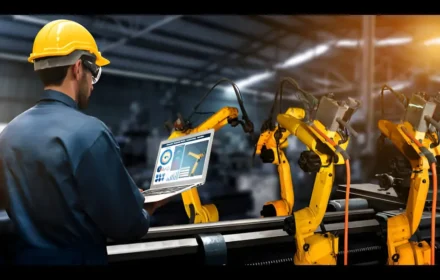Navigating Allen-Bradley ControlLogix Network Modules: A Technical Guide
Introduction to ControlLogix Communication Solutions
Industrial automation systems require robust communication networks. According to MarketsandMarkets, the industrial communication market will reach $27.1 billion by 2027. Rockwell Automation’s ControlLogix platform offers versatile network modules. These components enable seamless data exchange between PLCs, DCS, and factory devices. This guide examines five critical communication modules for modern control systems.
EtherNet/IP Network Bridges: 1756-ENBT and 1756-EN2T
The 1756-ENBT provides foundational Ethernet connectivity. This module supports 10/100 Mbps speeds for control and information applications. It enables integration with HMI panels and enterprise systems. However, the 1756-EN2T offers enhanced performance with dual ports. This advanced module supports device-level ring topology for network redundancy. Both modules use CIP protocol for real-time control and information exchange.
ControlNet Communication: 1756-CNB Module
The 1756-CNB delivers deterministic control network functionality. This module operates at 5 Mbps for high-speed I/O and peer-to-peer messaging. ControlNet provides scheduled communication for time-critical applications. It maintains precise synchronization across distributed control systems. Many plants use this technology for process control applications requiring guaranteed response times.
Legacy Ethernet Connectivity: 1756-ENET Module
The 1756-ENET represents Rockwell’s earlier Ethernet implementation. This module enables basic TCP/IP communication within ControlLogix chassis. While functional for basic connectivity, it lacks the advanced features of newer modules. Many facilities still operate this module in legacy systems. However, for new installations, we recommend upgraded alternatives.
System Redundancy: 1756-CPR2 Power Cable
The 1756-CPR2 enables redundant power supply configurations. This specialized cable connects primary and backup power supplies. It ensures continuous operation during power supply failures. Critical processes in oil & gas and power generation depend on this redundancy. The cable facilitates automatic switchover without system disruption.
Technical Comparison and Selection Guidelines
Understanding module differences ensures optimal system design. Consider these technical aspects:
- ✅ Network Protocol: EtherNet/IP vs ControlNet vs basic Ethernet
- ✅ Data Speed: 100 Mbps (ENBT/EN2T) vs 5 Mbps (CNB)
- ✅ Topology Support: Star, linear, and device-level ring capabilities
- ✅ Redundancy Features: Network and power supply options
- ✅ Application Requirements: Real-time control vs information exchange
Industry Applications and Solution Scenarios
Different industries benefit from specific module capabilities:
- ⚙️ Automotive Manufacturing: 1756-EN2T for high-speed device integration
- ⚙️ Water Treatment Facilities: 1756-CNB for deterministic process control
- ⚙️ Pharmaceutical Plants: 1756-ENBT with CPR2 for validated systems
- ⚙️ Food & Beverage: Multiple EN2T modules for distributed control
Author Insights: PLCDCSHUB Perspective
Industrial networks are evolving toward unified Ethernet architectures. The 1756-EN2T represents this trend with advanced features. However, ControlNet remains relevant for specific deterministic applications. When selecting modules, consider both current needs and future expansion. We recommend consulting with World of PLC Limited for specific application requirements. Their technical expertise can help optimize your control system architecture.
Frequently Asked Questions
What is the practical difference between ENBT and EN2T in operation?
The EN2T provides significantly better performance for data-intensive applications. In our experience, its dual ports enable simpler network architecture without additional switches. The device-level ring capability also enhances network reliability.
When should I choose ControlNet over EtherNet/IP?
ControlNet excels in applications requiring guaranteed determinism, such as high-speed synchronization. EtherNet/IP better serves systems needing integration with enterprise networks and cloud connectivity.
How critical is power supply redundancy for typical applications?
For continuous processes where downtime costs exceed $10,000 per hour, redundancy is essential. The CPR2 cable provides inexpensive insurance against power supply failures in critical control applications.








